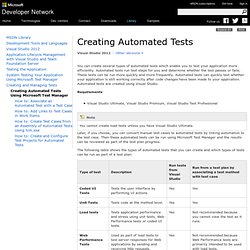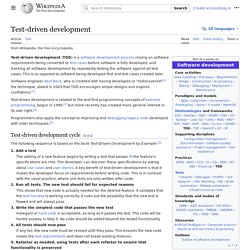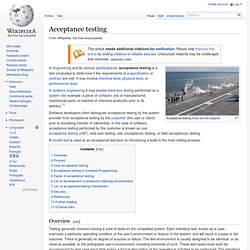

Security bug in Xen may have exposed Amazon, other cloud services [Updated] The Xen Project has published a security advisory that could affect millions of virtualized servers running in Amazon’s cloud and other public hosting services.
![Security bug in Xen may have exposed Amazon, other cloud services [Updated]](http://cdn.pearltrees.com/s/pic/th/security-services-technica-93349691)
A flaw in the Xen hypervisor could allow a malicious fully virtualized server to read data about other virtualized systems running on the same physical hardware or the hypervisor hosting the virtual machine. The malicious system could also potentially crash the server hosting the virtual machines. A patch, which was privately disclosed last week under embargo, has been issued to correct the issue. Xen is used by a number of public and private cloud providers to support infrastructure-as-a-service (IaaS) offerings such as Amazon’s Elastic Compute Cloud, Rackspace, and some configurations of the OpenStack cloud provisioning environment.
The flaw, discovered by Jan Beulich at SUSE, affects servers configured to support hardware-assisted virtualization (HVM) mode virtualization. Advertising firms struggle to kill malvertisements. In late September, advertisements appearing on a host of popular news and entertainment sites began serving up malicious code, infecting some visitors' computers with a backdoor program designed to gather information on their systems and install additional malicious code.

The attack affected visitors to The Jerusalem Post, The Times of Israel, The Hindustan Times, Internet music service Last.fm, and India-focused movie portal Bollywood Hungama, among other popular sites. At the center of the malware campaign: the compromise of San Francisco-based Internet advertising network Zedo, an advertising provider for the sites, whose network was then used to distribute malicious ads. For ten days, the company investigated multiple malware reports, retracing the attacker's digital footsteps to identify the malicious files and shut the backdoor to its systems.
"Our system is now clean," Francine Hardaway, marketing director, said in an e-mail exchange with Ars on September 29. Evil Tester. Creating Automated Tests. You can create several types of automated tests which enable you to test your application more efficiently.

Automated tests run test steps for you and determine whether the test passes or fails. These tests can be run more quickly and more frequently. Automated tests can quickly test whether your application is still working correctly after code changes have been made to your application. Automated tests are created using Visual Studio. Requirements Visual Studio Ultimate, Visual Studio Premium, Visual Studio Test Professional Later, if you choose, you can convert manual test cases to automated tests by linking automation to the test case.
Software testing. Software testing is an investigation conducted to provide stakeholders with information about the quality of the product or service under test.[1] Software testing can also provide an objective, independent view of the software to allow the business to appreciate and understand the risks of software implementation.

Test techniques include, but are not limited to the process of executing a program or application with the intent of finding software bugs (errors or other defects). Software testing can be stated as the process of validating and verifying that a computer program/application/product: meets the requirements that guided its design and development,works as expected,can be implemented with the same characteristics,and satisfies the needs of stakeholders.
Specification by example. Specification by example (SBE) is a collaborative approach to defining requirements and business-oriented functional tests for software products based on capturing and illustrating requirements using realistic examples instead of abstract statements.

It is applied in the context of agile software development methods, in particular behavior-driven development. This approach is particularly successful for managing requirements and functional tests on large-scale projects of significant domain and organisational complexity.[1] Robot Framework. The Robot Framework is a generic test automation framework for acceptance testing and acceptance test-driven development (ATDD).

It is a keyword-driven testing framework that uses tabular test data syntax.[1] History[edit] The basic ideas for the Robot Framework were shaped in the Pekka Klärck's masters thesis[2] in 2005. The first version was developed at Nokia Siemens Networks the same year. Version 2.0 was released as open source software June 24, 2008 and version 2.8.4 was released February 7, 2014.[3]
Test-driven development. Test-driven development (TDD) is a software development process that relies on the repetition of a very short development cycle: requirements are turned into very specific test cases, then the software is improved to pass the new tests, only.

This is opposed to software development that allows software to be added that is not proven to meet requirements. American software engineer Kent Beck, who is credited with having developed or "rediscovered"[1] the technique, stated in 2003 that TDD encourages simple designs and inspires confidence.[2] Behavior-driven development. Acceptance testing. In systems engineering it may involve black-box testing performed on a system (for example: a piece of software, lots of manufactured mechanical parts, or batches of chemical products) prior to its delivery.[1]

Specification by example. How we got 4,000 visitors and 200 beta testers for our app in two weeks without paying for anything : androidapps. Fuzz testing. The field of fuzzing originated with Barton Miller at the University of Wisconsin in 1988.

This early work includes not only the use of random unstructured testing, but also a systematic set of tools to evaluate a wide variety of software utilities on a variety of platforms, along with a systematic analysis of the kinds of errors that were exposed by this kind of testing. In addition, they provided public access to their tool source code, test procedures and raw result data.